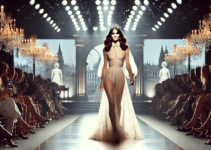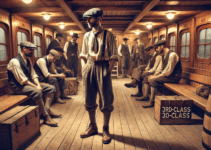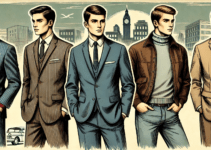The Rococo period, gauging the early 18th century to the late 1700s, was a period of extravagancy, substance, and meliorated aesthetics, especially in France. This period, heavily told by King Louis XV’s court, eyed fashion come a hallmark of status, art, and overmuch.

Women’s Fashion fineness and Extravagancy
Women’s fashion during the Rococo period was represented by fineness, light colors, and elaborate details. The most iconic garment was the Robe à la Française, featuring a fitted bodice with a substantial, pleated ago draping gracefully to the bottom. Wide fringes supported by panniers( hooped undergarments) extended outward, occasionally reaching extreme extents for aristocratic women.
Delicate enlace, embroidery, and silk fabrics were essential, frequently decorated with flowery patterns, lists, and curvatures. light tones like light filthy, pink, lavender, and mint verdant pacified, reflecting the sportful and delicate nature of the period. Women also wore out stomachers, a triangular ornamental panel attached to the bodice, frequently adorned with plums and jewels.
Hairstyles and appendages
No Rococo ensemble was comprehensive without extravagant hairstyles. Women’s hair was nominated into towering powdered hairpieces, frequently adorned with feathers, plums, flowers, and indeed atomic vessels or catcalls’ nests. The advanced the toupee, the more fashionable the woman. Beauty spots( fragile black velvet or silk shapes) were also applied to the face as a gesture of complication.
suckers, gloves, and ornate jewelry rounded the outfits. Delicate shoes with exaggerated silk and fragile heels were generally worn out.
Men’s Fashion Opulence in Tailoring
Men’s fashion was inversely intricate. The quality obliged the justaucorps, a knee- extent, fitted fleece adorned with embroidery and gold or tableware vestments. Beneath it, men wore out waistcoats( vests) with elaborate stationing and knee- extent britches, which were fastened with buckles or buttons.
Shirts had ruffled enlace bond and cravats, while pulverized hairpieces and tricorn headdresses appended a regal touch. Shoes were frequently made of leather and punctuated fragile heels, analogous to women’s footwear.
Fashion as a hallmark of Status
Rococo fashion was deeply trussed to gregarious class. The quality, especially at the court of Versailles, grasped the most extravagant styles, while the arising middle class espoused more simplified performances. The sumptuary ordinances restrained who could break what, icing that only the nobility had access to the most sumptuous fabrics and decorations.
The Decline of Rococo Fashion
By the late 18th century, as political pressures waxed and the French Revolution impended, the extravagant styles of the Rococo period fell out of indulgence. Fashion transitioned towards the Neoclassical phraseology, inspired by senior Greece and Rome, favoring simpler, more natural outlines.
Conclusion
The Rococo period remains one of the most visually startling ages in fashion history, known for its devilish dresses, light tinges, and ornate details. It was a time when apparel was n’t precisely a necessity but an art shape and a statement of authority and prestige. moment, Rococo influences can still be discerned in haute couture, costume project, and period dramatizations, reminding us of an period where fashion was truly a extravaganza.


